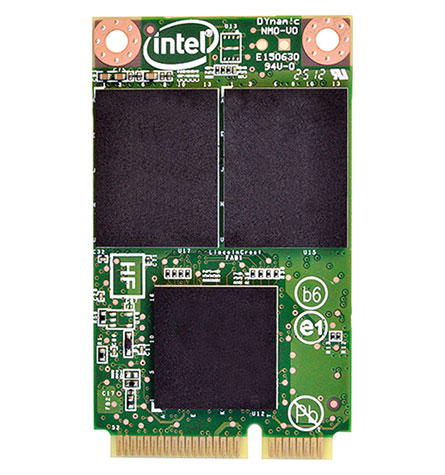Examining Intel's 525 Series mSATA Solid State Drive
Introduction & Specifications

All of these drives feature a SATA 6Gbps interface and specially tweaked SandForce firmware tuned for performance, power consumption, and reliability. Random read performance is rated as high as 50,000 IOPS and sequential reads go up to 550MB/s, while random and sequential write performance metrics are rated up to 80,000 IOPS and 520MB/s, respectively, depending on the specific model.
|
| Maximum sequential read speed up to 550MB/s Maximum sequential write speed up to 520MB/s 25nm NAND flash memory Multi-Level Cell (MLC) SATA 6Gb/s interface TRIM support (OS dependent) Up to 50,000 IOPS (random 4KB reads) Up to 80,000 IOPS (random 4KB write) Thickness: 3.7mm |
Full-sized mSATA form factor Native Command Queuing (NCQ) AES 128-bit encryption MTBF: 1.2 million hours Active power use: 300mW Idle power use: 250mW Warranty: 3 years Shock Resistance: 1,500G (@ 0.5msec half sine wave) O/S Support: Windows XP / Vista / 7 / 8 / Mac OS / Linux |
Intel designed these drives with its NUC in mind and claims users can expect a minimum useful life of 5 years assuming up to 20GB of written data per day, or at least 3 year if writing up to 30GB per day. The MSRPs for these drives are as follows:
- 30GB: $54
- 60GB: $104
- 90GB: $129
- 120GB: $149
- 180GB: $214
- 240GB: $279
Since the NUC is an obvious destination for the 525 Series and we happen to have one on hand, we used Intel's tiny box to test each of these drives in a Windows 8 environment. Our goal is to see if Intel can deliver on its promise to offer big boy performance in a toddler form factor. We'll get to Intel's report card in a moment, but first, let's take a closer look at Lincoln Crest.







